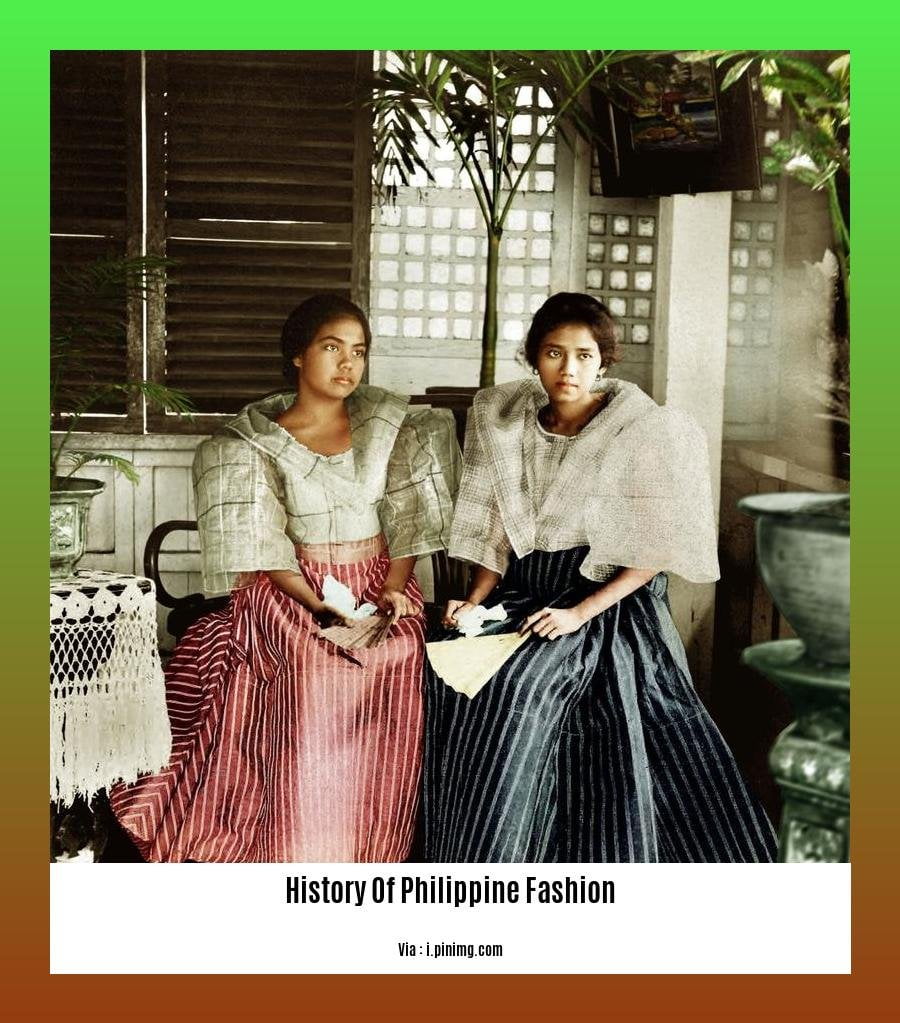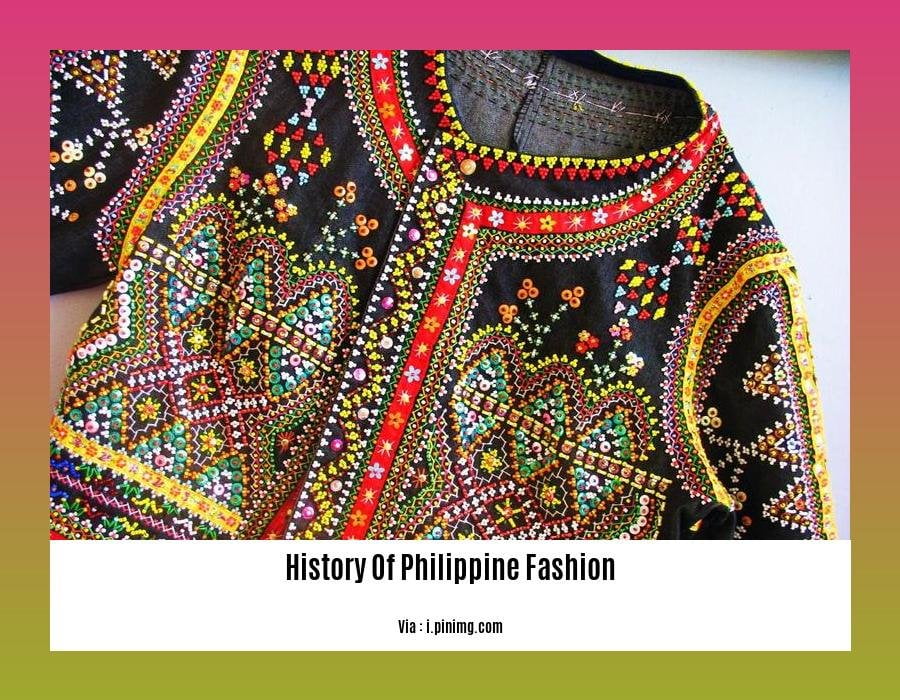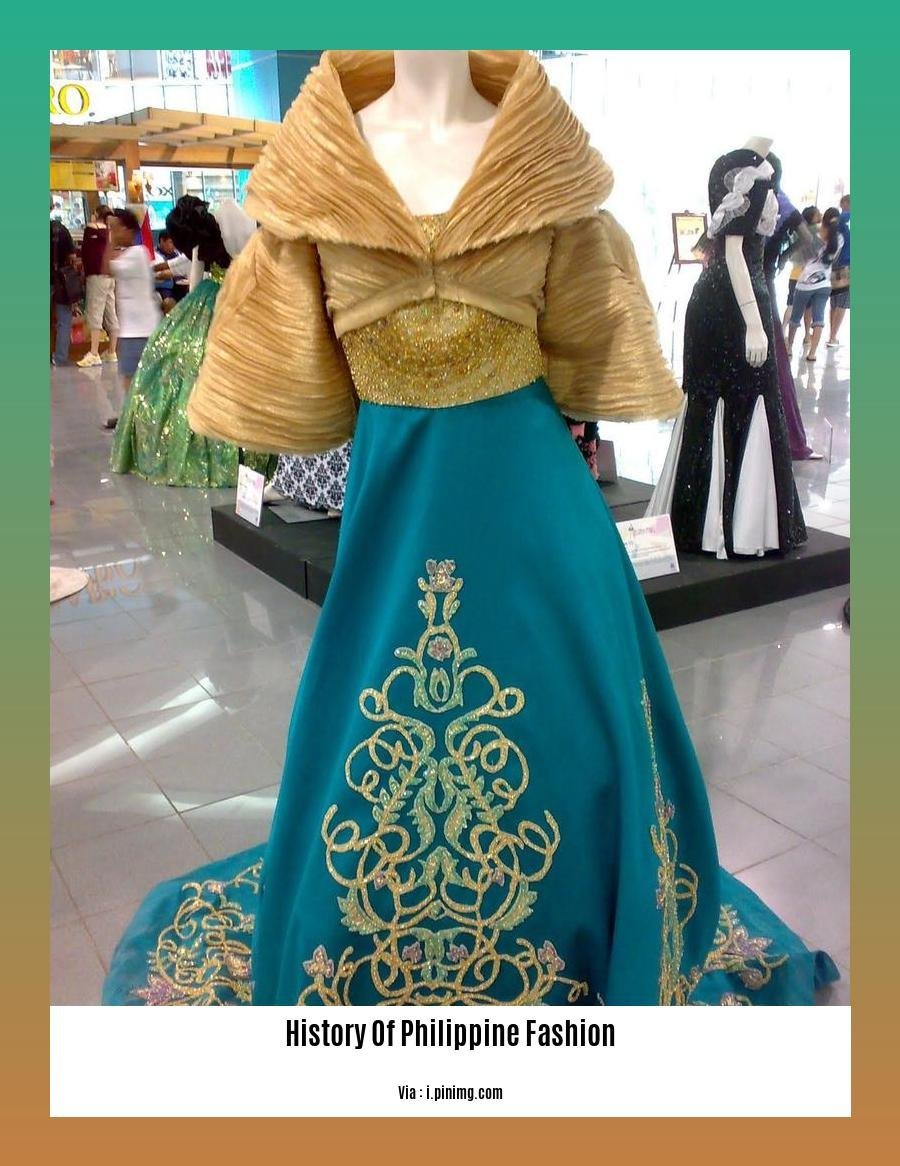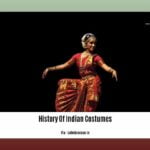Embark on a captivating journey through time as we unravel the rich history of Philippine fashion, a vibrant tapestry woven with cultural influences and remarkable artisanship. From the iconic Barong Tagalog, a symbol of national pride, to the elegant Terno, a garment that exudes femininity and grace, Philippine fashion has undergone a remarkable evolution, leaving an indelible mark on the global fashion landscape. Join us as we explore the stories, influences, and trends that have shaped the unique identity of Philippine fashion throughout the ages in this comprehensive article titled, “A Journey Through Time: Unraveling the History of Philippine Fashion.”
Key Takeaways:
-
Philippine clothing and fashion mix indigenous, Chinese, and tropical influences.
-
The Barong Tagalog, a translucent pineapple-fiber shirt, originated in Luzon.
-
Filipino women’s traditional wear includes the Baro’t Saya, a blouse and long skirt.
-
Pitoy Moreno, Ito Curata, Inno Sotto, and Rajo Laurel are notable Filipino fashion designers.
-
The Baro, a precursor to the Barong Tagalog, was worn by the Tagalogs before colonization.
History of Philippine Fashion

The Philippines is a country known for its rich history, diverse culture, and vibrant fashion scene. The evolution of Philippine fashion is a testament to the country’s resilience, adaptability, and creativity. From indigenous influences to global trends, let’s journey through the fascinating history of Philippine fashion.
Inception of Filipino Fashion
The history of Philippine fashion dates back to pre-colonial times when indigenous tribes crafted clothing and accessories from indigenous materials. These early garments were designed to provide comfort and protection from the tropical climate.
Colonial Influences
The arrival of colonizers in the Philippines brought new influences to Philippine fashion. The Spanish introduced European styles, fabrics, and techniques, which were blended with indigenous traditions to create unique Filipino designs. The Barong Tagalog, the national costume for men, is a prime example of this fusion.
Post-Colonial Fashion
After the Philippines gained independence, local designers began to explore their own aesthetic, drawing inspiration from the country’s rich cultural heritage as well as from global fashion trends. This era saw the emergence of Filipino designers like Pitoy Moreno and Ito Curata, who made a significant impact on the Philippine fashion scene.
Modern Filipino Fashion
Today, Philippine fashion is a vibrant mix of traditional and contemporary elements. Filipino designers are pushing boundaries and gaining international recognition for their unique designs that fuse ethnic motifs, indigenous materials, and modern silhouettes. The Philippine fashion industry is thriving, with local designers showcased in prestigious fashion shows and Filipino brands gaining a global following.
Notable Filipino Designers
Over the years, several Filipino designers have made a significant mark on the fashion industry. Here are a few notable names:
- Pitoy Moreno: Known for his innovative use of indigenous textiles and traditional silhouettes.
- Ito Curata: Celebrated for his modern interpretations of traditional Filipino clothing.
- Inno Sotto: Renowned for his avant-garde designs that blend Filipino elements with contemporary styles.
- Rajo Laurel: Known for his intricate gowns and intricate beadwork, often inspired by Filipino culture.
Fashion as Cultural Identity
Philippine fashion is more than just clothing; it is a reflection of the country’s cultural identity. It showcases the Filipino people’s creativity, resilience, and adaptability. The history of Philippine fashion is a story of evolution, innovation, and the enduring spirit of the Filipino people.
There are many wonderful reasons why you should learn about the history of Phoenix, Arizona, and the history of Puerto Galera. Both cities have rich and fascinating histories, which are sure to captivate anyone who is interested in learning more about them.
Terno: A Timeless Symbol of Filipino Heritage and Elegance

In the tapestry of Philippine fashion, the terno stands as a radiant symbol of elegance, sophistication, and national pride. Throughout its rich history, this traditional dress has charmed the world with its graceful silhouettes, vibrant colors, and intricate embroidery.
The Enduring Elegance of the Terno
The terno traces its roots to the late 19th century when Filipino women sought alternatives to cumbersome and restrictive colonial attire. Inspired by traditional Filipino garments and European fashion trends, the terno emerged as a unique expression of Filipino identity.
Crafted from luxurious fabrics such as piña, silk, or organza, the terno features a flowing blouse with delicate sleeves and a floor-length skirt. Its most distinctive characteristic is its fitted bodice, which elegantly accentuates the wearer’s figure. Completed with a striking sash or belt, the terno exudes an aura of both poise and sensuality.
Evolution of the Terno Through the Decades
Over the years, the terno has undergone subtle transformations, reflecting the changing tastes and styles of each era. During the American colonial period, the terno embraced a more conservative silhouette, featuring longer sleeves and skirts. After independence, the terno experienced a resurgence as a symbol of national pride, with designers incorporating more vibrant colors and intricate embroidery inspired by Philippine culture.
In the contemporary fashion landscape, the terno continues to captivate with its timeless appeal. Modern designers are reimagining the traditional terno by incorporating contemporary elements such as bold prints, asymmetrical cuts, and innovative fabrics. These reinterpretations preserve the essence of the terno while infusing it with a fresh, modern aesthetic.
Key Takeaways:
-
The terno is a traditional Philippine dress that emerged in the late 19th century as a symbol of Filipino identity and elegance.
-
Crafted from luxurious fabrics and featuring a fitted bodice, flowing blouse, and floor-length skirt, the terno accentuates the wearer’s figure and exudes poise and sensuality.
-
Throughout its history, the terno has undergone subtle transformations, reflecting changing tastes and styles, while maintaining its timeless appeal.
-
Contemporary designers are reimagining the traditional terno with bold prints, asymmetrical cuts, and innovative fabrics, honoring its heritage while infusing it with a modern aesthetic.
[Sources]
-
Philippine Terno: A Timeless Masterpiece of Filipino Fashion
-
Terno, The Philippine National Dress
FAQ
Q1: What is the significance of the Barong Tagalog in Philippine fashion?
A1: The Barong Tagalog is a symbol of national pride and identity in the Philippines. It originated in Luzon and is traditionally made from translucent pineapple fiber. The Barong Tagalog is worn by men for formal occasions and is often paired with trousers or a vest.
Q2: What is the evolution of the Barong Tagalog?
A2: The Barong Tagalog has evolved over time, with different styles and designs emerging. In the early days, the Barong Tagalog was a simple shirt made from indigenous fabrics. Over time, it became more elaborate, with the addition of embroidery, lace, and other embellishments. Today, the Barong Tagalog comes in a variety of styles, from the classic white to more modern and contemporary designs.
Q3: What is the Terno?
A3: The Terno is a traditional Filipino women’s dress that consists of a blouse and a skirt. The blouse is typically made from sheer fabric and has butterfly sleeves. The skirt is usually made from a heavier fabric and is often decorated with embroidery or other embellishments.
Q4: What is the evolution of the Terno?
A4: The Terno has also evolved over time, with different styles and designs emerging. In the early days, the Terno was a simple dress made from indigenous fabrics. Over time, it became more elaborate, with the addition of embroidery, lace, and other embellishments. Today, the Terno comes in a variety of styles, from the classic white to more modern and contemporary designs.
Q5: Who are some notable Filipino fashion designers?
A5: Some notable Filipino fashion designers include Pitoy Moreno, Ito Curata, Inno Sotto, and Rajo Laurel. These designers have played a significant role in shaping the evolution of Philippine fashion, and their work has been recognized both locally and internationally.















